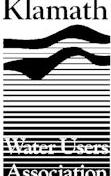
Klamath Water Users Association
Dan Keppen's
letter to
the New York Times
|
|
Klamath Water Users Association Dan Keppen's
letter to
|
|
KWUA
Response: August 6, 2003 Editor, The Op-Ed Page New York Times 229 West 43rd Street New York, New York 10036 Dear Editor: The recent New York Times editorial describing the Bush Administration's actions in the Klamath Basin ("Karl Rove's Water Policy, August 6, 2003") perpetuates myths driven by anti-farming interests and mischaracterizes the proactive approach this administration has taken to address the challenges we face here in the Klamath River watershed. We question the Times' claim that farmers have "prevailed at almost every step of the way". Just months after George Bush took office, the federal government announced that, for the first time in 95 years, Klamath Project water supplies out of Upper Klamath Lake would be curtailed. The 2001 water cutoff had immediate and far-reaching impact on the local community. Loss of irrigation supplies devastated farmers and imparted an estimated $200 million economic "ripple" effect through the broader community. The 2001 water cutoff also tragically underscored the vital linkage that exists between irrigated farmland and wildlife. Water that would normally flow through farmland habitat was directed instead towards three protected fish species. The vitality of over 430 other wildlife species was threatened when subjected to the same fate as farmers. Local farmers clearly don't believe they "prevailed" in 2001. Unfortunately, the Bush Administration inherited this problem from agency biologists who were given wide latitude in the previous administration. Fortunately, in the time that has elapsed since, the Bush Administration has taken a proactive role in addressing the very contentious and complicated issues that characterize the Klamath River basin. Recent actions undertaken by the Administration include completion of a state-of-the-art $14 million fish screen to protect endangered sucker fish, creation of an environmental water bank that provides incentive for farmers to generate water for coho salmon and suckers, and implementation of a $50 million farm water conservation program. The Bush Administration in March also released agency action plans, which, for the first time ever, provide a sense of what the federal agencies have done to address environmental challenges in the Klamath River watershed. The Times’ attempt to link other federal actions to the unfortunate 2002 Klamath River fish die-off is unjustified. Contrary to the Times' editorial conclusion, it cannot be shown that low flows killed Klamath River salmon last fall. Simply look at 1988, when identical flow conditions existed in the Lower Klamath River. That year, a run of 215,322 salmon occurred on the Klamath River and no fish die-off occurred. In 2002, 132,600 salmon returned, and 33,000 died on the lower river. In other words, there was a much larger salmon run in 1988 with the same lower river flow but no fish die-off. Yet the Yurok Tribes and the State of California - within days of the fish die-off - assigned the blame for this unfortunate event to flows originating from the Klamath Project, located 200 miles upstream. The Times editorial perpetuates this questionable accusation. The editorial also incorrectly states that a federal judge ruled that the 10-year operations plan contained "flawed science". In fact, Judge Armstrong made no such finding. Instead, she directed that a few, specific modifications be made to the existing plan to address concerns about future proposed actions. In the meantime, the existing plan remains in effect. Further, based on the conflicting evidence presented by the parties regarding the cause of the fish die-off, Armstrong found that a “triable issue of fact” exists as to whether the federal government breached its duty to the Yurok Tribes through its operation of the Klamath Project. Accordingly, the Court denied the Tribes’ motions for summary judgment on this matter. Finally, the "win-win" proposal touted by the Times is the same plan designed by outside, environmental activists who seek to buy out Klamath Project landowners and return productive farmland to an idealistic "natural" state. Numerous local opponents of the buyout concept are concerned that businesses in the farm community could be forced to close or relocate if the large-scale sale of farmland becomes a reality. There are also many questions about the presumed water supply benefits resulting from this scheme, including the most obvious and important one: "What happens to the land after it is bought?" Proponents of a federal buyout would like to convert existing farmland to wetlands. Since evaporative losses from wetlands exceed the consumptive water use of crops currently produced in the Klamath Project, it is difficult for us to see how eliminating productive farmland equates to "freeing up reliable supplies for everyone", as suggested by the Times. Besieged local irrigators, coastal fishermen, elected officials and Bush Administration officials continue to work diligently to find real solutions to the Klamath Basin crisis. It does not appear at this time that the acquisition of family farms and ranches is an appropriate part of the solution. If the problem is simply avoiding another farm crisis, then buying out these families will succeed: Once they're gone, there won't be anyone left to complain about the lack of water. If the goal is to recover listed species - and to sustain an agricultural economy - then the solution must be comprehensive; all of the impacts that harm these species must be addressed. We must redirect our collective energies to this task, before all hope of fruitful coexistence dies. Sincerely, Dan Keppen Executive Director Klamath Water Users Association Dan Keppen Executive Director Klamath Water Users Association 2455 Patterson Street, Suite #3 Klamath Falls, OR 97603 (541) 883-6100 - Fax (541) 883-8893 |
|
Klamath Water Users
Association |
Content and Logo: Copyright © Klamath
Water Users Association, 2002 All Rights
Reserved
Page design: Copyright ©
klamathbasincrisis.org, 2002, All Rights
Reserved